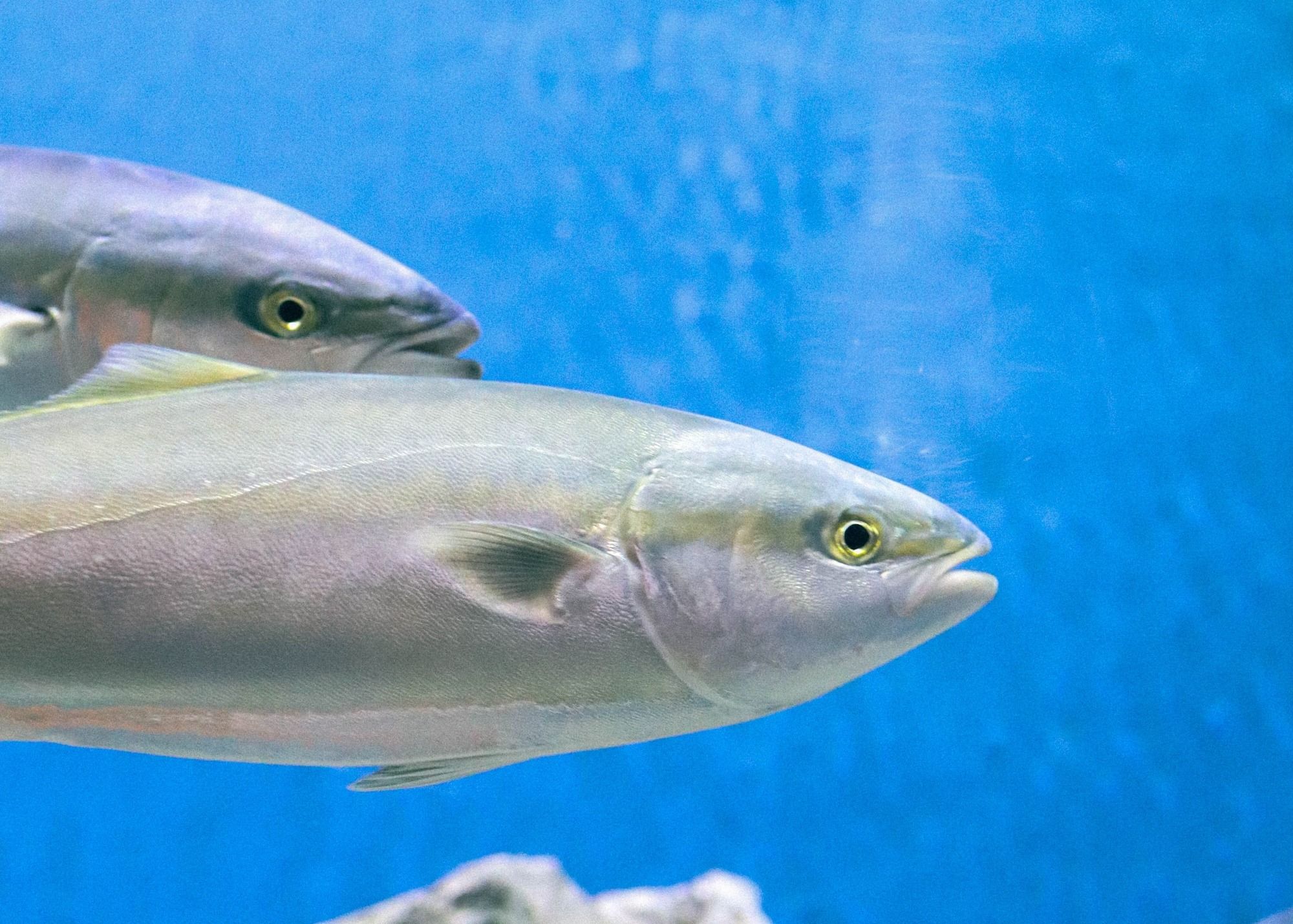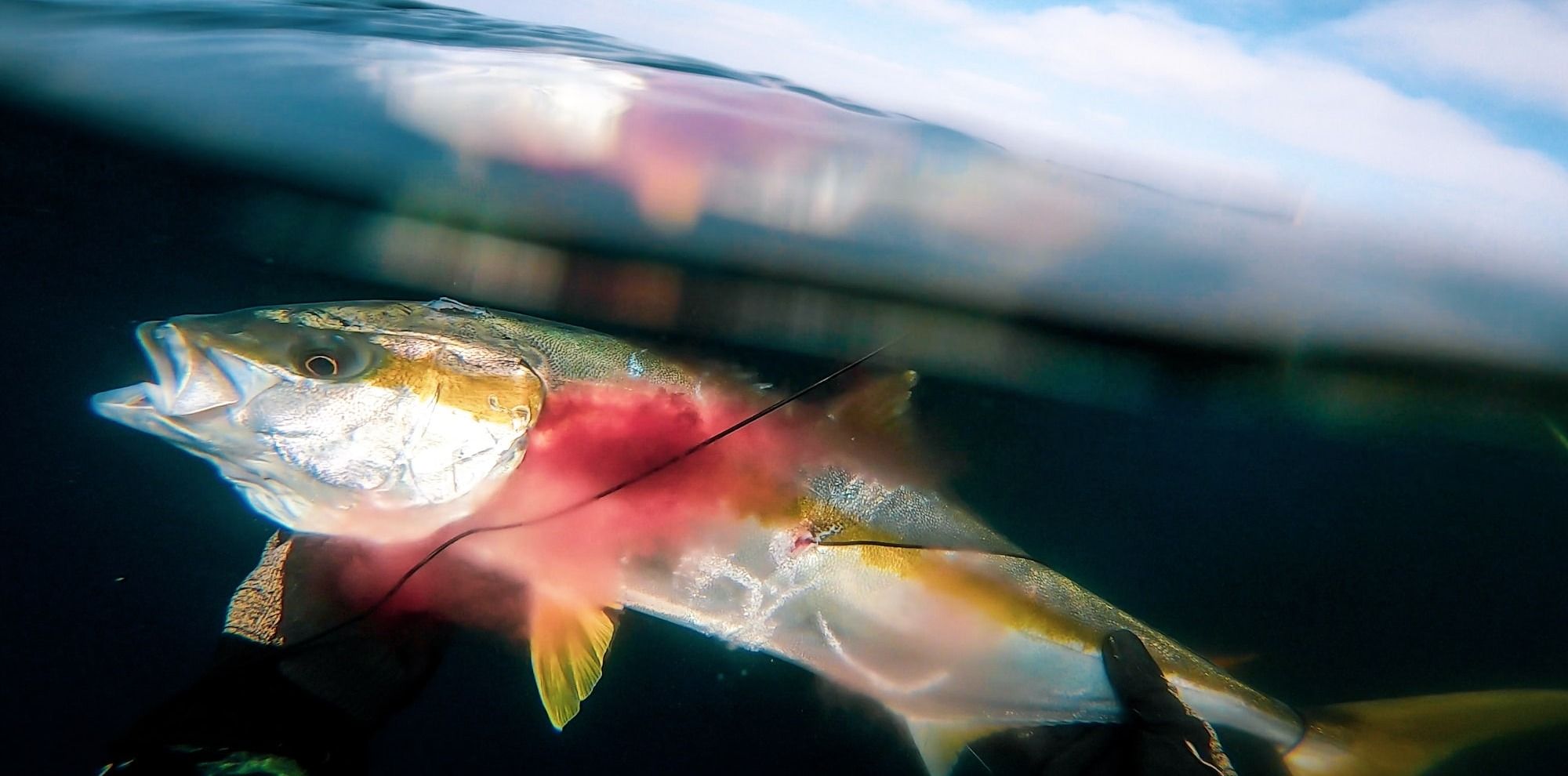Kan-Buri Fish: The High-Class Winter's Culinary Treasure of Japan
In Japan, tuna and salmon often top the list of favorite sushi toppings, with Buri or Hamachi coming in third, although its popularity notably extends to North America more so than other parts of Asia and Europe.

In Japan, when the discussion veers towards favored sushi toppings, Tuna frequently emerges victorious, closely followed by Salmon, with Buri nestling into the third position.
Although Buri or Hamachi has carved a niche within North American palettes as a prized element of Japanese culinary tradition, its star shines less brightly across the remainder of Asia and the tapestry of Europe.

What Is Buri (Hamachi)?
The Japanese amberjack, known as Seriola quinqueradiata, belongs to the jack fish family, Carangidae.
It thrives in the northwest Pacific Ocean, with its habitat stretching from China (where it's referred to as 鰤魚), Korea (called 방어), across Japan, all the way to Hawaii.
In Japan, it's cherished as Hamachi (Young Buri) or buri (鰤),a matured Buri savored either cooked or raw, especially during the colder months when its flesh is more fatty.
It's a winter delicacy, particularly in Toyama and the Hokuriku region. Often mislabeled as "yellowtail tuna" on menus, it's distinct from the Scombridae family which houses tunas, mackerels, and bonitos, remaining a proud member of the Carangidae family.
The coveted "kan-buri," wild caught in Hokuriku region's chilly waters, is recognized as a high-end yellowtail.
The Yellowtail Amberjack Varieties
The yellowtail categorization envelopes three distinct fish types: gold-striped amberjack or "Hiramasa," greater amberjack or "Kanpachi," and Japanese amberjack or "Buri," with sashimi-grade Buri predominantly hailing from the Japanese amberjack variety.
Regionally within Japan, Buri or hamachi garners various appellations, being called "wakashi" in the Kanto area, "inada" in Warasa, and known as "tsubasu" or "mejiro" in the Kansai region, showcasing the diverse nomenclature reflecting local dialects and traditions.
It can be perplexing, indeed. Beyond Japan, recognizing just the terms hamachi and buri will suffice.
History and Origin of Japanese Amberjack (Buri)
Wild Buri now predominantly thrives in the Sea of Japan, especially off the Hokuriku coast, a shift from its pre-World War II abundance in Sagami Bay and Kumano Sea along the Pacific coast due to post-war aquaculture resumption.
The tradition of naming buri at different growth stages, akin to historical Japanese naming customs post coming-of-age ceremonies, continues with terms like wakashi, inada, and hamachi denoting various sizes.
Globally known as yellowtail or Japanese amberjack, buri holds an auspicious significance in Japan under the concept of "Shusse-uo (Promotional fish)", marking farewells or celebrations with historical figures like Toshiie Maeda gifting it as a year-end token.
Regional customs around yellowtail gift-giving vary, reflecting local matrimonial traditions in Hokuriku and northern Kyushu.
Yellowtail Jack Taste Profile
With its origins in aquaculture, Buri boasts a fatty profile, offering a somewhat tender texture and a gentle, slightly tangy flavor. Its lack of fishiness contributes to its widespread appeal.
On the other hand, wild-caught winter yellowtail, known as Kanburi, while fatty, doesn't match the fat content of its farm-nurtured Hamachi kin.
Buri presents a more robust texture alongside a savory umami richness. Smaller wild variants like inada are characterized by their lean, firm texture, standing in contrast to the buttery composition of farm-raised counterparts.
What is the Current Market Price of Buri?
Yellowtail harvested from the Sea of Japan, specifically in the Hokuriku region, holds a prestigious position in the Japanese market.
The wild-caught Himi Kanburi, a prized variety of Buri, commands a luxurious price tag, retailing at approximately $400 per fish or around $50-60 per kilogram.
While the farm variety of Buri cost around $10-20 per kilogram

Why is Wild Kanburi So Expensive?
The premium price tag on wild Kanburi (Yellowtail) can be traced back to several interconnected factors that highlight its distinctiveness and desirability, especially in the culinary domain:
Buri's Superior Taste and Texture
Wild Kanburi is esteemed for its superior taste and texture, especially during the winter months when it acquires a higher fat content.
This richness in flavor and buttery texture is a result of the natural diet and environment in which the fish thrives, setting it apart from its farm-raised counterparts.
Seasonality
Kanburi is treasured as a seasonal delicacy, with particular appeal during the colder months from November to early February.
The limited availability and heightened anticipation surrounding its seasonal return often enhance its value, making it a prized possession during its season.
Geographic Origin
Wild Kanburi is harvested from the pristine, chilly waters around the Hokuriku region, which are known for yielding high-quality fish.
This geographic indication provides a mark of quality and prestige, contributing to a higher price point.
Supply and Demand
The allure of wild Kanburi resonates strongly among aficionados of Japanese cuisine and high-end eateries, creating a demand that often surpasses the supply.
This burgeoning demand, juxtaposed with the limited availability, particularly of wild-caught specimens, propels the market price upward.
The fervor for wild Kanburi extends across the shores to the US, where it is highly prized, further fueling the demand and elevating its market stature.
Only the Highest Quality Selected for Auction
In Himi City, Toyama Prefecture, nestled in the northwestern corner of Toyama Bay, the prized Himi yellowtail must be caught using fixed nets in designated areas.
Once ashore, Buri are auctioned at Himi Fishing Port, with only those weighing 6 kilograms or more earning the "Himi yellowtail" certification. Their arrival in the market is signified by a blue box, a mark of authenticity and quality.
The brief season, lasting from late November to early February, coupled with the stringent catch conditions, elevates Himi yellowtail to a high-class winter fish, eagerly awaited by connoisseurs each year.
Sustainable Fishing Practices
The artful capture of Himi Kanburi using fixed nets in designated areas reflects a sustainable fishing practice that is not only environmentally responsible but also ensures a superior quality catch.
Health Benefit of Buri: DHA and EPA
Yellowtail is rich in essential fatty acids with 1700 mg of DHA and 940 mg of EPA per 100g serving, known for brain stimulation and better blood circulation respectively.
It also contains Vitamin E, which manages the oxidation of these fatty acids, along with B vitamins, Vitamin D, and taurine, an umami-enhancing amino acid, making it a nutritious choice.
Culinary Uses for Buri or Hamachi
Buri (adult Yellowtail or Japanese Amberjack) are celebrated fishes in Japanese cuisine, each bringing its unique textures and flavors to a variety of dishes.
Their culinary applications reflect not only the tradition but also the innovation within Japanese and global cuisine. Here are some of the culinary uses:
Sushi and Sashimi
Both Hamachi and Buri are top picks for sushi and sashimi due to their tender, buttery texture and mild flavor.
Negihama
A delightful fusion of negi (scallion) and hamachi results in Negihama. Here, finely minced yellowtail melds with scallions, usually showcased in maki sushi form.
On a fortunate day, a chef might craft it into gunkanmaki, a nigiri variant where nori seaweed encircles the rice, cradling the tender negi hamachi mixture within.
Grilling
Buri, with its firm flesh, is often grilled (as in Hamachi Kama or the grilled collar) with a bit of salt (shioyaki) or teriyaki sauce, yielding a succulent, flavorful dish.
Carpaccio
Thinly sliced Hamachi can be used in a carpaccio preparation, drizzled with olive oil, lemon juice, and garnished with fresh herbs.
Tataki
Hamachi or Buri can be lightly seared (Tataki), leaving the inside raw, and served with a citrus-soy dressing.
Broiling
The fatty nature of these fishes makes them excellent candidates for broiling, resulting in a crispy exterior while retaining a moist interior.
Hamachi Jalapeno
The fusion of yellowtail sashimi with jalapeno slices has found a warm reception in the US. Drizzles of ponzu, a citrus-infused soy sauce, add a zesty kick to this fatty, spicy, savory, and citrusy appetizer.
Conclusion
The fleeting charm of Himi Kanburi, available from late November to early February, makes it a prized winter delicacy.
Harvested from Toyama Bay under strict conditions, its limited market presence justifies the high price.
Ranking close to tuna and salmon as a winter favorite, Himi Kanburi symbolizes both luxury and quality in Japanese cuisine and beyond, with its price mirroring its culinary prestige.


